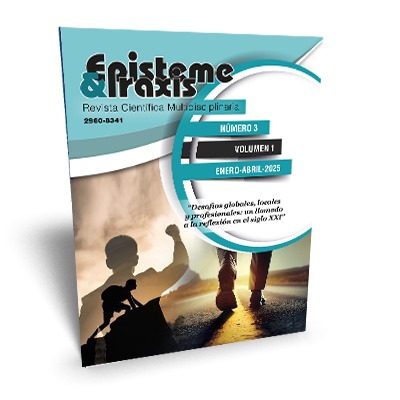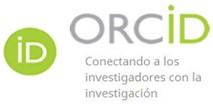Container-based microservices architecture for agile deployment of IoT applications in the cloud
DOI:
https://doi.org/10.62451/rep.v3i1.73Keywords:
Microservices, IoT, container architectures, digital transformation, cloud computingAbstract
The research explores the transformation of container-based microservices architectures for agile deployment of IoT applications in the cloud, addressing scalability, flexibility, and computational efficiency challenges, the study reveals a growing trend towards these architectures, with a 45% increase in publications between 2019 and 2024, the methodology integrated a systematic literature review, comparative strategy analysis, and multiple case studies across various industrial sectors, results demonstrate significant reductions in operational costs between 30% and 60% compared to traditional monolithic architectures, three main strategies were identified: lightweight microservices, dynamic elastic scaling, and service isolation. Experimental findings showed substantial improvements: 40% reduction in communication latency, 55% improvement in horizontal scalability, and 35% optimization in energy efficiency, the developed reference framework highlights design patterns for IoT microservices architectures, characterized by service decoupling, asynchronous communication, fault tolerance, and horizontal scalability, the research concludes that these architectures represent a fundamental evolution in IoT application development, facilitating continuous innovation, adaptability, and agile response to changing digital market demands.
References
Amazon Web. (2024). What is container orchestration. https://aws.amazon.com/what-is/container-orchestration/
Armbrust, M., Fox, A., Griffith, R., Joseph, A., Katz, R., Konwinski, A., Lee, G., Patterson, D., Rabkin, A., Stoica, I., & Zaharia, M. (2021). A view of cloud computing. Communications of the ACM, 53(4), 50-58. https://dl.acm.org/doi/10.1145/1721654.1721672 DOI: https://doi.org/10.1145/1721654.1721672
Atlassian. (2024). SOA frente a microservicios: qué es lo mejor para tu empresa. https://www.atlassian.com/es/microservices/microservices-architecture/soa-vs-microservices
Barabási, A.L., & Albert, R.(1999). Emergence of scaling in random networks. Science, 286(5439), 509–512. https://doi.org/10.1126/ciencia.286.5439.509 DOI: https://doi.org/10.1126/science.286.5439.509
Barua, B., & Kaiser, M. S. (2024). A Methodical Framework for Integrating Serverless Cloud Computing into Microservice Architectures. Preprints. https://doi.org/https://doi.org/10.20944/preprints202410.0494.v1 DOI: https://doi.org/10.20944/preprints202410.0494.v1
Belcastro, L., Marozzo, F., & Trunfio, P. (2024). Infrastructures for High-Performance Computing: Cloud Computing. Elsevier. https://doi.org/https://doi.org/10.1016/B978-0-323-95502-7.00005-1 DOI: https://doi.org/10.1016/B978-0-323-95502-7.00005-1
Bhardwaj, A. (2024). Significance of IoT for Smart Homes and Cities. En, A. Bhardwaj, Smart Home and Industrial IoT Devices: Critical Perspectives on Cyberthreats, Frameworks and Protocols. (pp. 1-23). Bentham Books. DOI: https://doi.org/10.2174/9789815256710124010002
Božić, V. (2023). Microservices Architecture. Research proposal. https://doi.org/10.13140/RG.2.2.21902.84802
Chouhan, U., Tiwari, V., & Kumar, H. (2023). Comparing Microservices and Monolithic Applications in a DevOps Context. (Poenencia). 3rd Asian Conference on Innovation in Technology. Pune, India. DOI: https://doi.org/10.1109/ASIANCON58793.2023.10270721
Chulca, C., & López, R. (2020). Migración hacia una arquitectura basada en microservicios del sistema de gestión centralizada de laboratorios de la DGIP. (Trabajo de titulacion). Escuela Politécnica Nacional.
Dave, S. A., Nadukuru, S., Singiri, S., Goel, O., Tharan, O., & Jain, &. P. (2024). Scalable Microservices for Cloud Based Distributed Systems. Darpan International Research Analysis, 12(3), 776–809. https://doi.org/https://doi.org/10.36676/dira.v12.i3.132 DOI: https://doi.org/10.36676/dira.v12.i3.132
Díaz-Guevara, N. C., Miranda-Salvatierra, K. T., & Mateo-Washbrum, I. A. (2024). Perspectivas y desafíos de las redes 6G para el Internet de las cosas. Revista UGC, 2(3), 72-80. https://doi.org/https://universidadugc.edu.mx/ojs/index.php/rugc/article/view/56
Dubey, A., & Yadav, S. (2024). Basics of Internet of Things. Indian Scientific Journal Of Research In Engineering And Management. https://doi.org/https://www.doi.org/10.55041/ijsrem37970 DOI: https://doi.org/10.55041/IJSREM37970
Erl, T. (2020). Service-Oriented Architecture: Concepts, Technology, and Design. Prentice Hall.
Garey, M. R., & Johnson, D. (2024). Computers and Intractability: A Guide to the Theory of NP-Completeness. Freeman.
Google-Cloud. (2024). Google Cloud. https://cloud.google.com/kubernetes-engine/docs/concepts/what-is-gke
Gul, S., Malik, B. A., & Banday, M. T. (2022). Intelligent Load Balancing Algorithms for Internet of Things - A Review. International journal of sensors, wireless communications and control, 12(6), 415 - 439. https://doi.org/https://www.doi.org/10.2174/2210327912666220726150049 DOI: https://doi.org/10.2174/2210327912666220726150049
Heredia, A. (2020). Políticas de fomento para la incorporación de las tecnologías digitales en las micro, pequeñas y medianas empresas de América Latina: revisión de experiencias y oportunidades. CEPAL. https://www.cepal.org/es/publicaciones/45096-politicas-fomento-la-incorporacion-tecnologias-digitales-micro-pequenas-medianas
Holland, J. H. (1992). Adaptation in natural and artificial systems: An introductory analysis with applications to biology, control, and artificial intelligence. Quick Bibliography Series. DOI: https://doi.org/10.7551/mitpress/1090.001.0001
Huawei Technologies Co. (2022). Container Technology. In: Cloud Computing Technology. Springer. DOI: https://doi.org/10.1007/978-981-19-3026-3
IBM. (2024). What is container orchestration? https://www.ibm.com/cloud/learn/container-orchestration
Jiménez Aliaga, C. (2018). Arquitecturas de microservicios para aplicaciones desplegablesen contenedores. (Trabajo de fin de grado). Universidad Politécnica de Madrid.
Li, C., Tang, J., & Luo, Y. (2020). Elastic edge cloud resource management based on horizontal and vertical scaling. The Journal of Supercomputing, 76, 7707–7732. https://doi.org/https://www.doi.org/10.1007/S11227-020-03192-3 DOI: https://doi.org/10.1007/s11227-020-03192-3
Microsoft. (2024). Scaling out vs scaling up. https://azure.microsoft.com/en-us/resources/cloud-computing-dictionary/scaling-out-vs-scaling-up
Mishra, S., & Panda, S. K. (2023). Cloud Computing: Applications, Challenges and Open Issues. arXiv. https://doi.org/https://doi.org/10.48550/arXiv.2305.17454
Newman, S. (2021). Building Microservices: Designing Fine-Grained Systems. O'Reilly Media.
PayPro, G. (2024). ¿Qué es el desarrollo ágil? Modelos y métodos. https://payproglobal.com/es/respuestas/que-es-el-desarrollo-agil/
Quispe Cieza, F. (2020). Análisis de una plataforma para aplicaciones web con una arquitectura basada en contenedores para implementar servicios dirigidos a startups. (Trabajo de titulación). Universidad Peruana de Ciencias Aplicadas.
Sarishma, A. (2021). A Systematic Review of the Impact of Containerization on Software Development and Deployment Practices. Journal Press India, 1(1), 40-51. https://doi.org/https://doi.org/10.17492/computology.v1i1.2105 DOI: https://doi.org/10.17492/computology.v1i1.2105
Schwaber, K., & Sutherland, J. (2024). The Scrum Guide. https://scrumguides.org/scrum-guide.html
Silberschatz, A. G. (2018). Operating system concepts. Wiley.
Simon, H. A. (1996). The sciences of the artificial (3rd ed.). MIT press.
Sisinni, E., Flammini, A., Gaffurini, M., & Ferrari, P. (2024). Exploiting Container-Based Microservices forReliable Smart Mobility Applications. ACM SIGAda Ada Letters, 43(2), 52 - 56. https://doi.org/https://doi.org/10.1145/3672359.3672365 DOI: https://doi.org/10.1145/3672359.3672365
Tanenbaum, A. S. (2021). Distributed Systems: Principles and Paradigms. Prentice Hall.
Usman, M., Ferlin, S., Brunstrom, A., & Taheri, J. (2022). A Survey on Observability of Distributed Edge & Container-Based Microservices. IEEE Access, 10, 86904-86919. https://ieeexplore.ieee.org/document/9837035 DOI: https://doi.org/10.1109/ACCESS.2022.3193102
Vishnu, S. (2023). A world with Cloud Computing. International Scientific Journal of Engineering and Management, 2(4). https://doi.org/https://www.doi.org/10.55041/isjem00279
Yang, D., & Dai, W. (2022). A Lightweight Container Design for Microservice-based Industrial Edge Applications. (Ponencia). 17th Conference on Industrial Electronics and Applications. Chengdu, China. DOI: https://doi.org/10.1109/ICIEA54703.2022.10006175
Yang, F., & Gu, S.. (2021). Industry 4.0, a revolution that requires technology and national strategies. Complex and intelligent Systems, 7(8). https://link.springer.com/article/10.1007/s40747-020-00267-9 DOI: https://doi.org/10.1007/s40747-020-00267-9
Downloads
Published
How to Cite
Issue
Section
License
Copyright (c) 2025 Diana Carolina Decimavilla-Alarcón, Pedro Fernando Marcillo-Franco

This work is licensed under a Creative Commons Attribution-NonCommercial 4.0 International License.
The authors retain the copyright, granting the Journal the right to first publication of the work. The authors assign the journal the rights to exploit the work, authorizing its distribution and public communication for non-commercial purposes. The authors retain the moral rights to the published work. The economic rights belong to the Journal.






